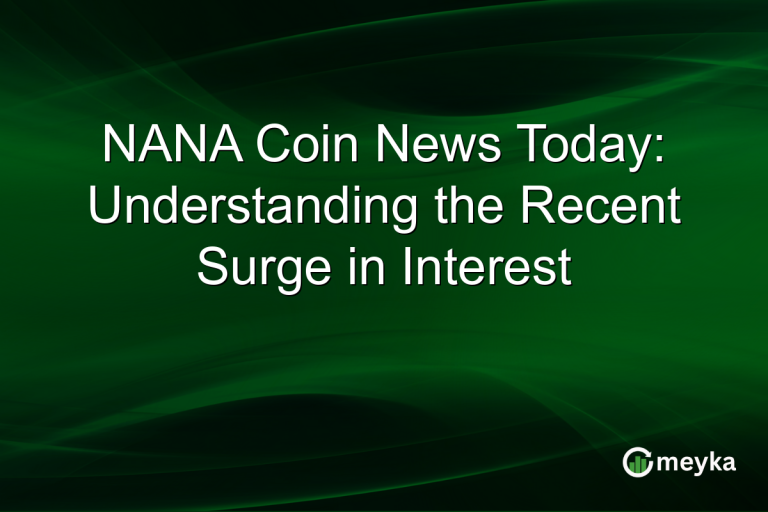Ripple’s Bold Move: Acquiring Stablecoin Firm Rail for $200 Million
Ripple, a leader in blockchain technology, has taken a significant step by acquiring Toronto-based stablecoin platform Rail for $200 million. This strategic move comes as part of Ripple’s efforts to expand its influence in the ever-growing stablecoin market. With stablecoins becoming a vital part of the digital currency ecosystem, Ripple aims to enhance its payment solutions and broaden its market reach.
The Deal: Ripple Buys Rail
Ripple’s decision to purchase Rail is a calculated one. The stablecoin sector is gaining momentum, with many financial institutions integrating these digital currencies into their payment systems. By acquiring Rail, Ripple aims to leverage Rail’s established technology and customer base. Rail, known for its innovative payment solutions, provides Ripple with a ready platform to enhance its service offerings. The acquisition not only increases Ripple’s market presence but also positions it strategically for future growth. This $200 million deal underscores Ripple’s commitment to strengthening its foothold in the blockchain space. According to Reuters, stablecoin transactions are experiencing exponential growth, predicted to exceed a $1 trillion market by 2025. This acquisition places Ripple at the forefront of this expanding market.
The Impact on XRP
As Ripple integrates Rail into its operations, we anticipate a positive impact on XRP’s market performance. The introduction of a robust stablecoin platform can enhance XRP’s utility, creating more avenues for its application in global transactions. Ripple’s strategy to integrate stablecoin technology with its existing offerings is likely to increase demand and stability for XRP. Currently, XRP trades at competitive levels, reflecting investor confidence in Ripple’s strategic directions. Analysts project further appreciation of XRP as the integration progresses, making the acquisition a potentially lucrative development for investors holding XRP. The enhanced capabilities could lead to increased transaction volumes, thereby potentially boosting XRP’s market capitalization.
Ripple’s Strategy and the Blockchain Market
Ripple’s acquisition reflects its strategic vision to dominate in the blockchain payment solutions market. By targeting stablecoins, Ripple is addressing the key challenges of volatility and conversion that many cryptocurrencies face. Stablecoins, typically pegged to fiat currencies, offer the stability that attracts corporate and retail investors alike. This move not only broadens Ripple’s offering but also enhances its competitiveness against other players in the fintech space. Analysts view this acquisition as a strategic pivot that could redefine how decentralized finance (DeFi) is perceived. As Ripple continues to innovate, its blend of traditional finance and blockchain technology positions it uniquely in the industry. This acquisition could also spur similar moves among competitors, potentially leading to a wave of consolidation in the blockchain sector.
Future of Ripple’s Stablecoin Initiatives
Ripple aims to capitalize on Rail’s expertise to develop advanced stablecoin solutions. By leveraging Rail’s existing infrastructure, Ripple can offer better-integrated payment systems, appealing to a broader range of users. Looking ahead, Ripple’s focus on interoperability and efficiency aligns with global trends towards more streamlined financial services. Investment in stablecoin technology is a forward-thinking move that aligns with Ripple’s long-term goals. With increased regulatory scrutiny across digital finance platforms, Ripple’s proactive stance on ensuring compliance and adoption of secure, auditable solutions could enhance its credibility. This acquisition is not just a step forward for Ripple but a leap towards a mainstream acceptance of blockchain-based financial systems.
Final Thoughts
Ripple’s $200 million acquisition of Rail marks a pivotal moment in its expansion strategy. By entering the stablecoin payment arena, Ripple not only broadens its service offerings but also enhances its competitive stance within the blockchain market. As Ripple continues to grow, investors can rely on platforms like Meyka for real-time insights and predictive analytics to make informed investment decisions. This acquisition is a testament to Ripple’s ongoing commitment to innovation and market leadership.
FAQs
Ripple’s acquisition of Rail highlights its strategy to enhance its presence in the stablecoin market, leveraging Rail’s technology to expand its services.
The acquisition is expected to positively impact XRP by increasing its utility and potential demand, which could enhance its market performance in the long term.
Stablecoins provide less volatility and are crucial for financial systems. Ripple’s move to acquire a stablecoin firm aligns with its goal to offer more stable payment solutions.
Disclaimer:
This is for information only, not financial advice. Always do your research.






